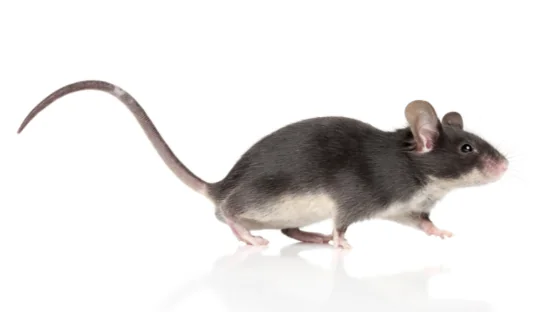A team of researchers publishing in Cell Death & Disease has found that the age-related decline of mitochondrial calcium uptake family member 3 (MICU3), a regulator of mitochondrial function, is associated with sarcopenia, the aging-associated loss of muscle.
Why mitochondria control their calcium uptake
The calcium ion, Ca2+, is vital in mitochondrial metabolism and interacts with NAD+ as part of energy production. Ca2+ is carefully regulated through the MICU family, as too much leads to overload and cellular damage, but too little leads to the mitochondria being unable to do their job. Mice that did not properly uptake Ca2+ were shown to suffer from significant frailty in previous research [1], and the same has been shown to be true for people [2].
Much previous research has been focused on MICU1, a related modulator of Ca2+, but MICU3 research is relatively new, and the researchers point to a significant investigation being published in 2019 [3]. These researchers did not find any prior investigation regarding the role that MICU3 plays in skeletal muscle.
Aging and senescence in MICU3 decline
The researchers analyzed the muscle tissue of mice and found that MICU3 levels naturally decline with age; 26-month-old mice were shown to produce less than half the MICU3 than 6-month-old mice. This corresponded to a slight, but significant, decline in overall mitochondrial calcium uptake.
Next, the researchers induced cellular senescence in C2C12, a line of murine muscle stem cells, through the administration of D-gal, and they found similar results to the cells of naturally aged mice. In another experiment, the researchers silenced the MICU3 RNA in C2C12 cells, finding that this caused them to suffer mitochondrial dysfunction and harmed their ability to differentiate.
The value of restoring MICU3
Finally, the researchers used an adenovirus (AAV9) engineered to cause old mice to overexpress MICU3. Interestingly, an intramuscular injection of this virus affected only the muscle in question and did not markedly increase MICU3 in other muscle tissues.
The results were clear. Older mice cannot run as far as their younger counterparts, but older mice given this injection regained some of this ability. Muscle mass and function in the injected muscle was significantly improved, according to both performance and biochemical markers.
Unfortunately, while it seemed to make existing cells stronger, MICU3 overexpression did not improve the number of muscle cells, which declines during aging. However, MICU3 was instrumental in preventing cellular death due to apoptosis caused by reactive oxygen species (ROS), as shown by examination of a critical metabolic pathway.
The researchers looked more closely at this pathway, which is mediated by SIRT1, whose modulation has been extensively researched for its effects on aging. They found that SIRT1 was vital in the anti-apoptosis effects of MICU3, as blocking SIRT1 prevented this effect. Additionally, increasing SIRT1 increased MICU3, and inhibiting SIRT1 also inhibited MICU3, suggesting that MICU3 is at least partially downstream of SIRT1.
MICU3 also seemed to benefit senescent C2C12 cells, as multiple markers of muscle health were improved through its overexpression.
Conclusion
While this study seems to focus on a downstream effect of aging rather than a root cause, the insights it offers are illuminating, both in terms of piecing together the large puzzle of aging and in providing a potential therapeutic target, as the biology of MICU3 is largely unexplored. Focusing on MICU3 instead of SIRT1 might provide a more tangible benefit with fewer side effects, and a combination approach might be more effective than using either alone.
Of course, without human trials, this remains in the realm of conjecture. We look forward to future research that harnesses these findings to prove the value of an MICU3-focused intervention in human beings. If successful, such an intervention could potentially alleviate age-related frailty for millions of people.
Literature
[1] Gherardi, G., Monticelli, H., Rizzuto, R., & Mammucari, C. (2020). The mitochondrial Ca2+ uptake and the fine-tuning of aerobic metabolism. Frontiers in Physiology, 11.
[2] Debattisti, V., Horn, A., Singh, R., Seifert, E. L., Hogarth, M. W., Mazala, D. A., … & Hajnóczky, G. (2019). Dysregulation of mitochondrial Ca2+ uptake and sarcolemma repair underlie muscle weakness and wasting in patients and mice lacking MICU1. Cell reports, 29(5), 1274-1286.
[3] Patron, M., Granatiero, V., Espino, J., Rizzuto, R., & De Stefani, D. (2019). MICU3 is a tissue-specific enhancer of mitochondrial calcium uptake. Cell Death & Differentiation, 26(1), 179-195.


